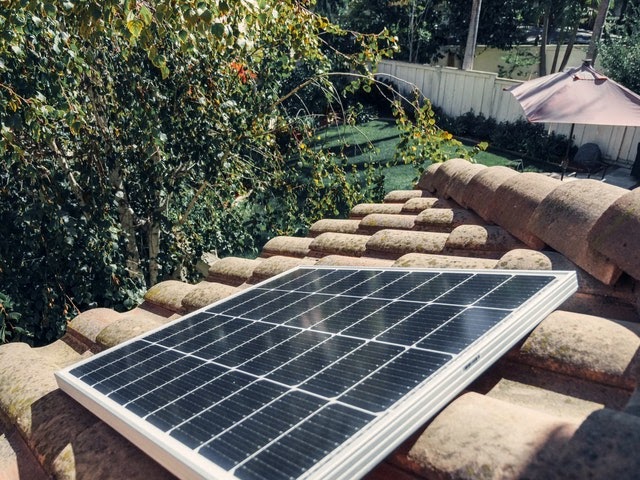If you’re thinking about making the transition to solar power for your home, you probably have many questions about the process. There’s a good chance you came across material regarding solar battery backups while doing your research. At this point, you may be wondering, “what is a solar battery?”
Solar batteries store the energy generated by your panels for later use. Solar panels produce direct current (DC) electricity, which is converted to alternating current (AC) to power electrical appliances. Excess solar production from a solar battery system can charge the batteries instead of being routed to the utility grid.
Grid-Tie vs. Off-Grid
Among the many things you have to know about solar batteries is that there are two systems: grid-tie and off-grid. Understanding how each differs will help you decide the best alternative for your home.
Grid-Tie
A grid-tied battery type means your solar panel system remains connected to the local utility grid to supplement your energy requirements at sundown or during cloudy days. With grid-tied systems, you’ll only need a battery bank big enough to power the essentials.
This system uses a dual-function inverter that lets extra electricity generated from solar panels flow to the grid or the battery bank for charging. Most grid-tie systems have no generator as backup.
Off-Grid
The battery system for an off-grid solar panel setup requires a large capacity battery bank. The system is designed to meet most of a home’s power requirements since there is no connection to the grid to draw electricity as needed.
Off-grid systems are equipped with a stand-alone inverter that only converts DC from the solar panels to AC for household use. While backup generators are optional, most systems have one to cover reduced electricity production.
Types of Solar Batteries
There are five major types of solar batteries:
1. Flooded Lead-Acid
This wet cell battery is filled with electrolytes and is best suited for full-time off-grid systems. The estimated lifespan is three to five years, but they can last longer with regular maintenance like watering, cleaning, and venting.
2. Gelled Electrolyte Sealed Lead-Acid
This battery utilizes silica gel to suspend electrolytes. While it is best for deep cycle (long period) applications, it is more suited for intermittent use as backup power or off-grid vacation homes. Its average lifecycle is two to five years but can be extended with upkeep and keeping the depth of discharge, or DoD, below 20 percent. (DoD refers to how much of the battery’s power has been used.)
3. Sealed Absorbed Glass Mat Lead-Acid
With electrolytes held in thin glass mats, this battery is most suited for standby applications with unusual deep discharges. Its battery life ranges from four to seven years, and it charges faster than a flooded battery.
4. Lithium-Ion
Instead of lead-acid, this battery uses lithium iron phosphate to store energy. It is widely used for all energy applications and can last up to ten years. Thanks to its construction, this battery is safe and maintenance-free. The initial high cost of the battery is recovered in the long run.
5. Flow
A flow battery has multiple reaction stacks divided by electrolytes stored in tanks and is recharged by refilling lost electrolytes. Since it can be recharged and discharged without degradation, a flow battery has a long lifespan of 25 years. It requires little maintenance but can hold large amounts of power safely since electrolytes don’t get hot or start a fire.
Do I Need a Solar Battery?
Even if you’re tied to an electrical grid, having a solar battery is useful and, in some cases, necessary. Below are a few reasons to set up a storage system in your home.
Have Backup Power
When you live in an area prone to power outages from natural calamities or aging infrastructure, expect to have no electricity during these times. To protect utility workers, grid-tied solar systems have to be shut down during power outages to ensure no power flows through the lines they’re working on. With solar batteries, your daily life is uninterrupted even with widespread blackouts.
Avoid Peak-Time Utility Rates
Consuming electricity during peak hours means you have to pay higher rates. Utility companies charge more during this time because of increased demand. Cut back on costs by using stored power from your solar battery instead.
Increase Energy Independence
Solar batteries allow you to become less reliant on your local utility provider, giving you more freedom to consume energy in your home.
Is It Worth Getting a Solar Battery?
The upfront cost of solar batteries is worth it in the long run when you consider the many benefits. Solar batteries eventually pay for themselves through significant cost savings associated with producing your electricity.
Learn More with Current Home
If you have more questions about what a solar battery is, the team at Current Home is more than happy to answer them for you. Their experts understand that choosing the right option can be daunting, especially with all that is available in the market.






